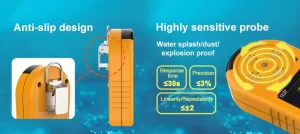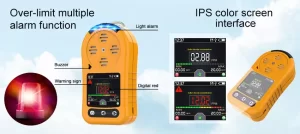Gas sensors play a crucial role in detecting and monitoring various gases in our environment. With advancements in technology, gas sensors have witnessed significant innovations, revolutionizing the field of detection and monitoring systems. This article explores recent advances in gas sensor technology and their applications in revolutionizing gas detection and monitoring systems.
Enhanced Sensing Mechanisms:
A key area of innovation in gas sensor technology is the development of enhanced sensing mechanisms. Traditional gas sensors often relied on single-sensing techniques, limiting their ability to accurately detect a wide range of gases. However, recent innovations have led to the integration of multiple sensing mechanisms, such as optical, electrochemical, and catalytic reactions. These advancements allow for improved accuracy, sensitivity, and selectivity of gas sensors.
Nanotechnology in Gas Sensors:
Nanotechnology has played a pivotal role in advancing gas sensor technology. By utilizing nanomaterials, gas sensors can achieve higher sensitivity due to increased surface area for gas interaction. Nanomaterials like metal oxides, carbon nanotubes, and graphene exhibit remarkable properties that enhance the performance of gas sensors. These advancements have resulted in the development of highly sensitive and selective gas sensors capable of detecting trace amounts of gases.
Selectivity Enhancement:
Accurate identification and differentiation of target gases from interfering substances are critical in gas sensing applications. Recent innovations have focused on enhancing the selectivity of gas sensors by incorporating advanced materials like metal-organic frameworks (MOFs) and polymers with specific functional groups. These materials provide specific binding sites for target gases, minimizing false readings and enhancing the reliability of gas detection.
Smart Sensing Systems:
The integration of gas sensors with smart sensing systems has revolutionized gas detection and monitoring. These systems utilize artificial intelligence (AI) algorithms and machine learning techniques to analyze sensor data, identify patterns, and provide real-time insights. By leveraging the power of AI, gas sensors can now accurately detect complex gas mixtures, continuously adapt to changing environmental conditions, and provide predictive analytics for potential gas hazards.
Wireless and Remote Monitoring:
The advent of wireless technology has enabled remote monitoring and control of gas sensing systems. Gas sensors equipped with wireless communication capabilities can transmit data in real-time to central monitoring stations or personal devices for analysis. This enables continuous monitoring of gas levels in large areas, even in remote or hazardous environments. Wireless connectivity also facilitates the integration of gas sensors into the Internet of Things (IoT) ecosystem, enabling seamless data exchange and integration with other smart devices and systems.
Miniaturization and Portability:
Advancements in gas sensor technology have led to miniaturization and increased portability. Miniaturized gas sensors can be integrated into compact and lightweight devices like wearable sensors or drones, facilitating on-the-go gas detection and monitoring. These portable systems allow for rapid deployment in various applications, including industrial safety, environmental monitoring, and personal exposure assessment.
Energy Efficiency:
Energy efficiency is a critical factor in the development of gas sensors, especially in battery-powered applications. Recent innovations have focused on minimizing power consumption while maintaining optimal performance. Advanced power management techniques, low-power circuitry, and energy harvesting technologies have been implemented, resulting in gas sensors that offer improved energy efficiency, longer battery life, and reduced environmental impact.
Real-Time Data Visualization:
Innovations in data visualization techniques have complemented gas sensing systems by providing intuitive representations of complex data. Real-time visualization tools like graphical interfaces, heat maps, and 3D modeling enable users to quickly interpret and analyze gas concentration levels, trends, and spatial distributions. This empowers decision-makers to take timely action and implement effective mitigation strategies.
Applications in Diverse Industries:
Gas sensor innovations have found applications across various industries. In the environmental sector, gas sensors are used to monitor air quality, detect greenhouse gases, and assess pollution levels. In industrial settings, gas sensors ensure worker safety by detecting toxic or flammable gases and enabling a prompt response in case of leaks or accidents. They are also utilized in medical diagnostics for breath analysis and monitoring patients' respiratory conditions.
 : +86 155 8830 2704
: +86 155 8830 2704 : jxdziot@gmail.com
: jxdziot@gmail.com
